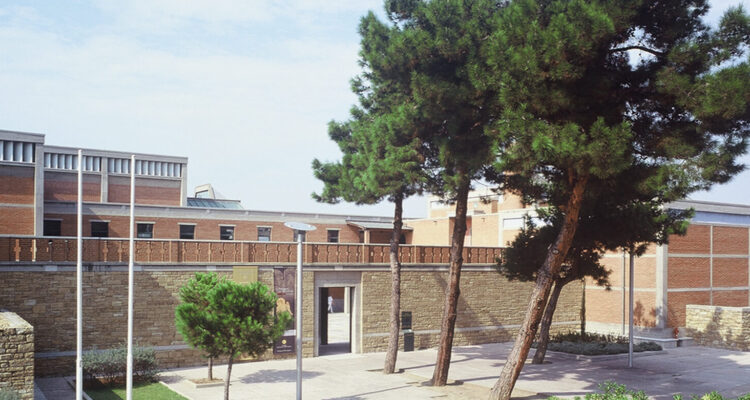The Museum of Byzantine Culture is a museum located on Stratou Avenue, across the Field of Areos, in Thessaloniki. It is a special regional unit of the Ministry of Culture. Since the opening of the Museum in 1994, the first magazine, created by a Greek state museum, started getting published, and is till today. The 11 rooms of the museum were gradually released to the public until 2004. In 2005, the museum was honored with the “Museum Prize” of the Council of Europe, while at the same time, it is considered one of the best buildings of public architecture created in recent decades in Greece.
The first exhibition has the theme of the early Christian temple, i.e. the architecture and decoration of churches in the first centuries of Christianity. The second exhibition is titled “Early Christian city and residence”. Aspects of economic life, housing and equipment, handicrafts and evidence of clothing and diet are exhibited in that part. In the third exhibition, titled “From the Elysian Fields to the Christian Paradise”, are exhibits such as the burial of the dead and the cemeteries of early Christian Thessaloniki (4th-7th century AD). This is an era characterized by the transition from paganism to Christianity. Early Christian sepulchral monuments of the city are exhibited there, and the topography, the architecture and the paintings are highlighted. The visitor can also see jewelry and vases from excavations made in early Christian tombs of Thessaloniki.
The next room, titled “From Iconoclasm to the greatness of the Macedonians and Komnenians”, is dedicated to the culture of the Middle Byzantine period (8th-12th century AD), during which the Byzantine Empire was booming intellectually and artistically, particularly during the Macedonian and Komnenian imperial dynasties. Topics such as monasticism, iconoclasm and the activities of the Thessalonian brothers Cyril and Methodius are discussed throughout the exhibition.
The next two rooms are dedicated to the Byzantine Emperors and the daily life in a Castle during the Byzantine years. In the eighth and ninth rooms, respectively, are the collections of Dimitrios Economopoulos (with icons from the 14th-18th centuries) and Doris Papastratos with many religious engravings as well as wood and copper templates.
In room 10, titled “Byzantium after Byzantium”, are the Byzantine legacy in the times after the Conquest. The permanent exhibition of the Museum is completed with the exhibition titled “Discovering the past”, which is in room 11. An attempt is made for the archaeological findings from the excavation to be given to the museum.
Official Site: https://www.mbp.gr/
Copyright 2023 © Created By Diadyktio, All Rights Reserved.
To provide the best experiences, we and our partners use technologies like cookies to store and/or access device information. Consenting to these technologies will allow us and our partners to process personal data such as browsing behavior or unique IDs on this site and show (non-) personalized ads. Not consenting or withdrawing consent, may adversely affect certain features and functions.
Click below to consent to the above or make granular choices. Your choices will be applied to this site only. You can change your settings at any time, including withdrawing your consent, by using the toggles on the Cookie Policy, or by clicking on the manage consent button at the bottom of the screen.

Congratulation!